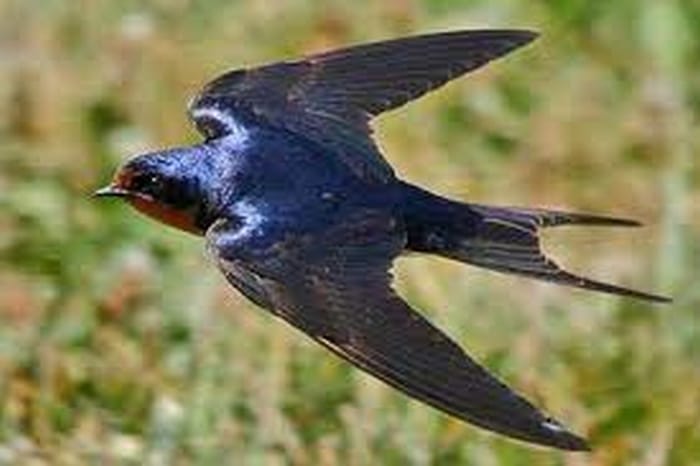
The swallows.
Normally we associate the arrival of the swallows with the arrival of spring, and their departure at the end of summer, this beautiful bird so common, which populates our skies in spring and summer, produces a great benefit to human beings, since it is an insectivorous bird that feeds on all kinds of insects, including annoying flies and dangerous disease-transmitting mosquitoes, that is why since ancient times they have been protected by man and considered birds of good luck.
However, there is a current tendency to knock down their nests for aesthetic reasons or simply because they litter the ground with their droppings.
Swallows exist practically all over the world, on all continents except in those places that are too cold, or thick forests and deserts, they are happy to see, very skilled in flight and are not in danger of extinction.
They have also received the attention of many poets, and there are references to them in world literature.
In Spain, I dedicate your attention to Gustavo Adolfo Becker, the romantic poet par excellence, with some eternal and immortal rhymes.
The dark swallows will return
on your balcony their nests to hang,
and, again, with the wing to its crystals
playing they will call;
but those that the flight restrained
your beauty and my happiness when contemplating,
those who learned our names...
those... won't come back!
We are going to describe these beautiful birds to get to know them a little better, and if their knowledge drives us to protect their nests and makes us aware of their benefits, we will win.
It is a small bird. The adult male of the nominate subspecies (H. r. rustica) measures between 14.6 and 19.9 cm in length, including the 2 to 7 cm of elongated outer tail feathers. It has a wingspan of between 32 and 34.5 cm and weighs between 16 and 22 g. Its upper part is metallic blue and its forehead, chin and throat are reddish. A thick dark blue stripe separates the throat from the whitish chest and abdomen. The outer tail feathers are elongated, giving the distinctive deeply forked appearance of swallows. It has a line of white spots along the outer end of the upper part of the tail. The appearance of the female is similar to the of male, but tail feathers shorter, blue of upperparts and breast band less lustrous, and chest and abdomen paler. Juvenile is browner, exhibiting a paler reddish face and whiter underparts; lacks the long tail feathers of adults.
The distinctive combination of reddish face and blue pectoral band makes it easy to distinguish between the adult Barn Swallow and the African species of Hirundo and the Australian Swallow (Hirundo neoxena), whose ranges overlap in Australasia. In Africa, the shorter tail of juveniles may be confused with the juvenile Red-breasted Swallow (Hirundo lucida), but the latter has a narrower pectoral band and whiter tail.
The song of the barn swallow is a warble that often ends in a su-seer in which the second note is higher than the first although its pitch is decreasing. Calls include a witt or a witt-witt or a loud splee-plink when excited or trying to drive off predators from the vicinity of the nest. Alarm calls include a sharp siflitt for predators such as cats and a flitt-flitt for birds of prey. This species is fairly quiet in its wintering quarters.
Molting of flight feathers takes place at wintering quarters, making subspecific identification of individuals difficult in winter. Postbreeding moult is very gradual, beginning in Europe in August before migration with moulting of body plumage and sometimes midwing coverts. In India, the molt would occur slowly and irregularly, extending over most of the winter and not having finished in April in some specimens.
Unlike swifts (Apus apus), swallows can perch horizontally, since the length of their legs provides them with adequate support to start the flight again from the ground.
I hope the swallows never miss in the spring of our lives.